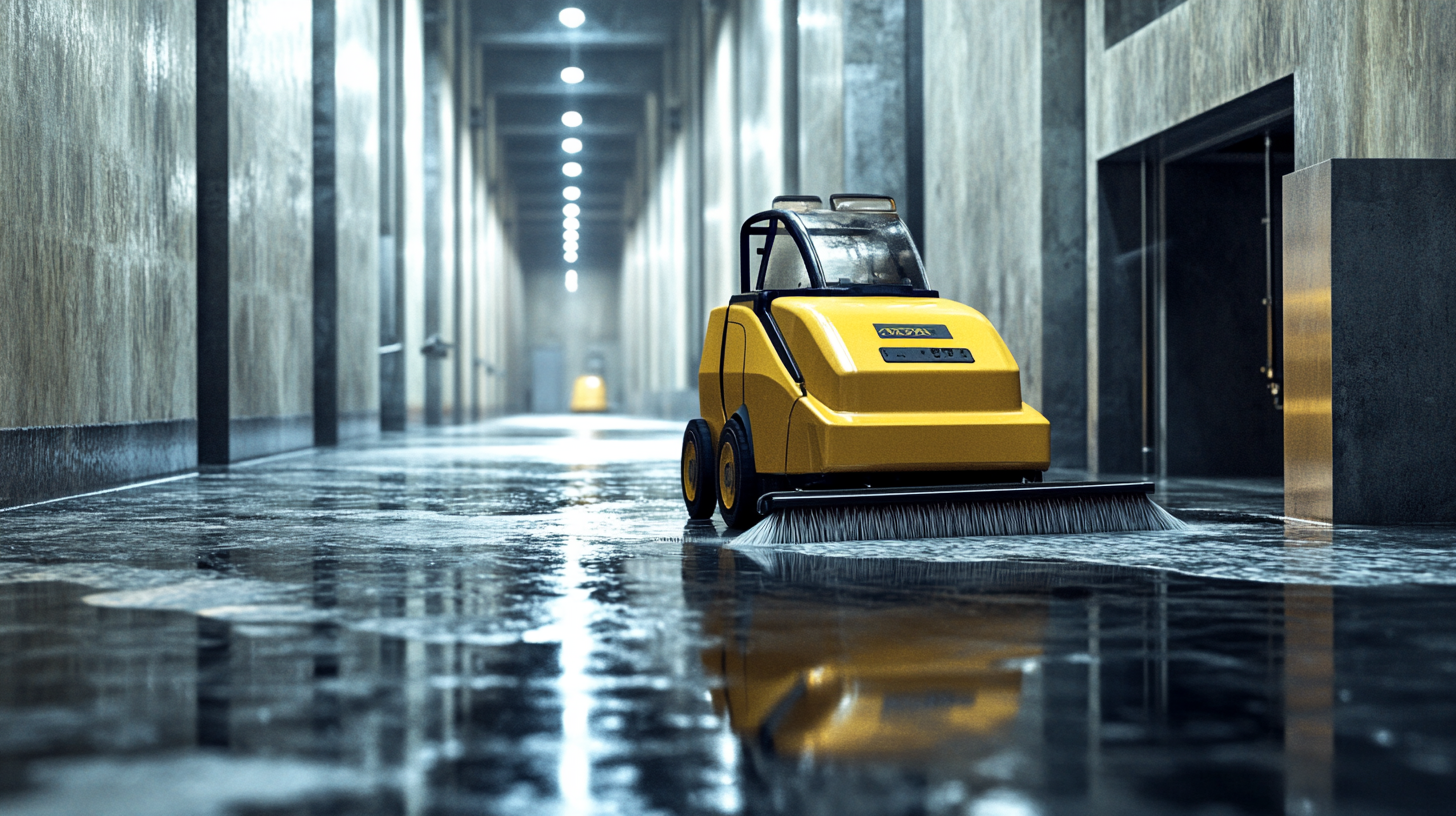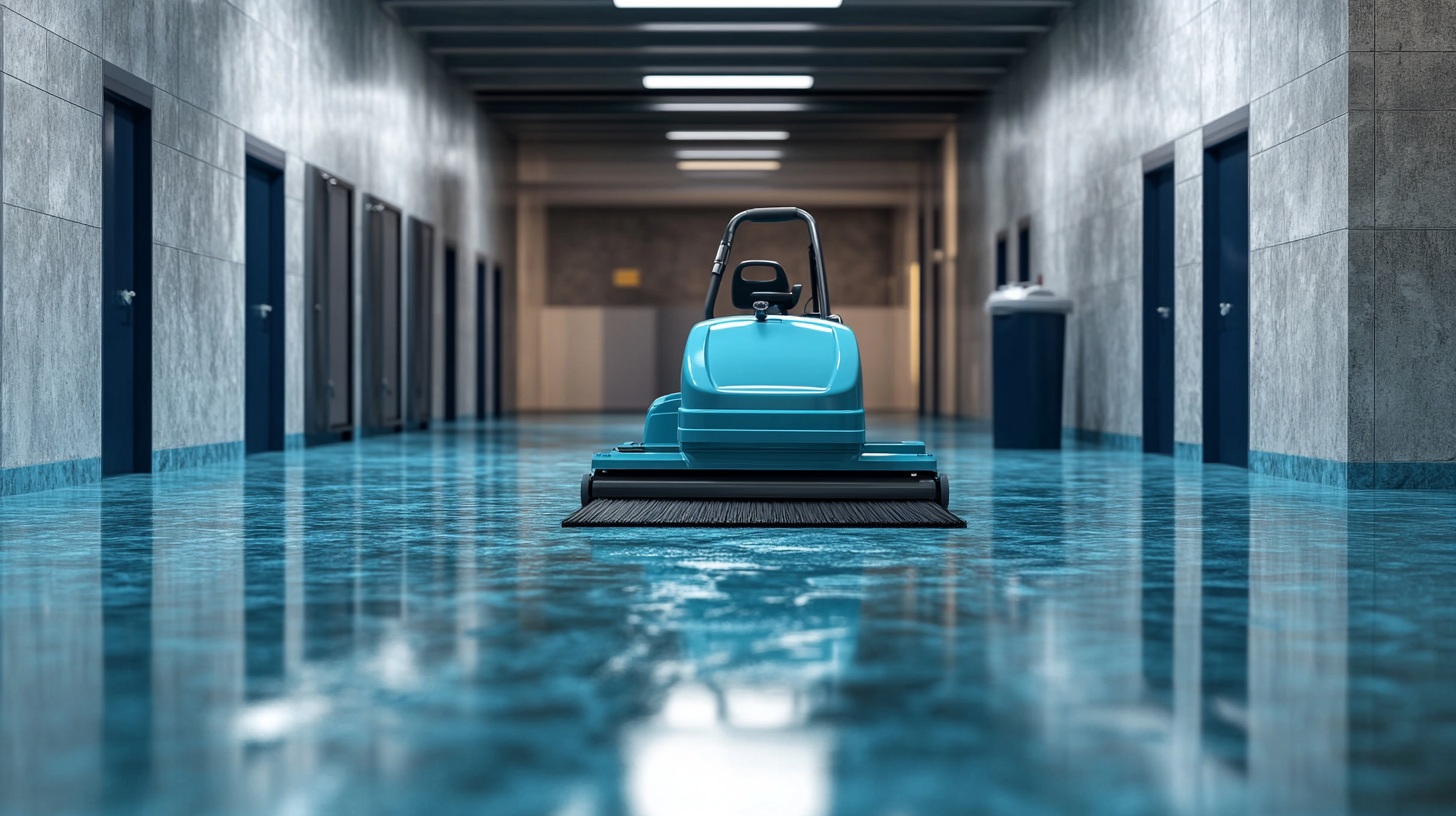Inquiry
Form loading...
In the ever-evolving landscape of the cleaning industry, maintaining high standards for equipment is crucial to achieving optimal performance and efficiency. One of the key players in this arena is the Floor Washing Scrubber, a versatile tool that has become essential for a variety of industries, from hospitality to manufacturing. As businesses strive to meet rigorous cleanliness and hygiene standards, understanding the challenges associated with floor washing technology becomes increasingly important. This blog will delve into the unique obstacles faced by manufacturers and users of floor washing scrubbers, particularly focusing on the best practices and standards that ensure sustainability and effectiveness. With insights drawn from some of China's top-quality manufacturing facilities, we aim to illuminate how these challenges can be navigated to harness the full potential of floor washing scrubbers, ensuring a cleaner, safer environment for all.

Choosing the right floor washing scrubber is critical for ensuring optimal cleaning efficiency and effectiveness. Recent industry reports indicate that advanced scrubbers, which integrate functions such as vacuuming, mopping, and scrubbing, are becoming increasingly popular for both commercial and residential use. According to the latest data, the demand for multifunctional cleaning appliances has surged by over 35% in 2023, highlighting their capability to streamline cleaning routines and reduce time spent on household tasks.
In light of this trend, consumers are advised to consider several key factors before making a purchase. A recent study pointed out that performance ratings play a crucial role in decision-making; machines that have received high scores in areas such as maneuverability, suction power, and ease of maintenance tend to be favored by users. Additionally, the introduction of standardized quality grading systems for floor washing scrubbers is helping consumers make informed choices by ensuring they select products that meet stringent performance benchmarks. With various brands vying for dominance in this rapidly evolving market, understanding these standards can significantly enhance the purchasing experience for consumers seeking reliable cleaning solutions.
This chart illustrates key factors that influence the selection of floor washing scrubbers in the industry, highlighting their importance scores based on a 1-10 scale. Efficiency emerged as the most crucial aspect, followed by durability and cost considerations.
When it comes to maintaining clean floors, the selection of the right floor washing scrubber is crucial. From traditional mops to advanced vacuum-mop combos, various types of floor washing scrubbers cater to distinct cleaning needs. For instance, rotary scrubbers are perfect for deep cleaning tiles and grout, while their counter-rotating brush counterparts excel on hard surfaces like hardwood or laminate, ensuring every corner of the floor shines.
In recent evaluations, more attention has been given to innovative features of floor washing scrubbers. Notably, some models integrate steam cleaning technology, which not only sanitizes but also lifts stubborn dirt without the need for harsh chemicals. Others come equipped with specialized attachments designed for both wet and dry cleaning, allowing users to tackle different spills and messes efficiently. By understanding the unique attributes of each type of scrubber, consumers can make informed decisions that optimize their cleaning routine, making the often dreaded task of mopping faster and more effective.
| Scrubber Type | Power Source | Tank Capacity (L) | Weight (kg) | Cleaning Width (cm) | Unique Features |
|---|---|---|---|---|---|
| Walk-Behind Scrubber | Electric | 50 | 70 | 75 | Ergonomic design, quiet operation |
| Ride-On Scrubber | Battery | 100 | 150 | 100 | High productivity, large area coverage |
| Compact Scrubber | Electric | 20 | 30 | 40 | Ideal for tight spaces, lightweight design |
| Automatic Scrubber | Battery | 80 | 120 | 85 | Autonomous operation, smart sensors |
| Floor Cleaning Robot | Battery | 15 | 25 | 30 | Remote control, programmable schedules |
When evaluating the best standards for commercial cleaning equipment, particularly floor washing scrubbers, it becomes essential to consider both performance and efficiency. The right scrubber not only enhances cleanliness but also ensures that the cleaning process is both cost-effective and environmentally friendly. Standards such as the American National Standards Institute (ANSI) and the International Organization for Standardization (ISO) provide essential guidelines that equipment manufacturers must follow to guarantee safety, reliability, and effectiveness. These guidelines help facility managers make informed choices about the equipment they invest in, ensuring they select machines that meet industry requirements while delivering exceptional cleaning results.
Another crucial aspect to consider is the adaptability of floor washing scrubbers to different environments and surfaces. With various cleaning tasks in commercial settings—from retail spaces to educational institutions—the ability of a scrubber to adjust cleaning patterns and solutions is vital. Standards for ergonomics also come into play, ensuring that equipment is user-friendly and reduces the risk of injury. By adhering to established standards, manufacturers can develop scrubbers that not only meet strict performance benchmarks but also support the well-being of cleaning staff, ultimately enhancing overall operational efficiency in commercial cleaning.
 The floor scrubbing industry is facing a myriad of challenges that hinder its growth and innovation. One significant challenge lies in the integration of new technologies, which is vital for enhancing the efficiency of floor washing scrubbers. As noted in recent industry reports, approximately 40% of cleaning companies struggle with outdated equipment, forcing them to compromise on service quality. To remain competitive, businesses must adapt to advancements such as AI and automation, which can streamline operations and reduce labor costs.
The floor scrubbing industry is facing a myriad of challenges that hinder its growth and innovation. One significant challenge lies in the integration of new technologies, which is vital for enhancing the efficiency of floor washing scrubbers. As noted in recent industry reports, approximately 40% of cleaning companies struggle with outdated equipment, forcing them to compromise on service quality. To remain competitive, businesses must adapt to advancements such as AI and automation, which can streamline operations and reduce labor costs.
Moreover, the escalating demand for cleaning solutions in various sectors is outpacing the supply of effective scrubbing tools. The increasing emphasis on hygiene and cleanliness, especially in commercial and public spaces, has led to a predicted growth rate of around 7% annually in the floor cleaning market. However, manufacturers are challenged to meet these demands while also ensuring that their products comply with stringent environmental regulations. Reports indicate that over 58% of decision-makers cite compliance and sustainability as top priorities, indicating a pressing need for eco-friendly floor scrubbing solutions that do not compromise on efficiency.
When selecting the ideal floor scrubber for your business, it’s essential to assess the specific needs and challenges of your industry. Different environments, such as healthcare facilities, restaurants, or warehouses, have unique flooring types and cleanliness standards. For instance, healthcare settings require scrubbers that can effectively eliminate pathogens, while restaurants may need machines that can handle grease and heavy foot traffic. Identifying the surface materials and the typical dirt types will help narrow down your choices.

Additionally, consider the size and layout of your space. Compact scrubbers are ideal for tight areas, allowing for better maneuverability without sacrificing cleaning power. On the other hand, larger machines are more suitable for expansive, open areas, delivering efficient cleaning in less time. Battery-operated models can offer more flexibility in movement and are often favored for spaces where power outlets are scarce. Always look for scrubbers with adjustable features so you can tailor operations to fit changing demands, ensuring you choose a machine that enhances your cleaning workflow while meeting industry standards.
